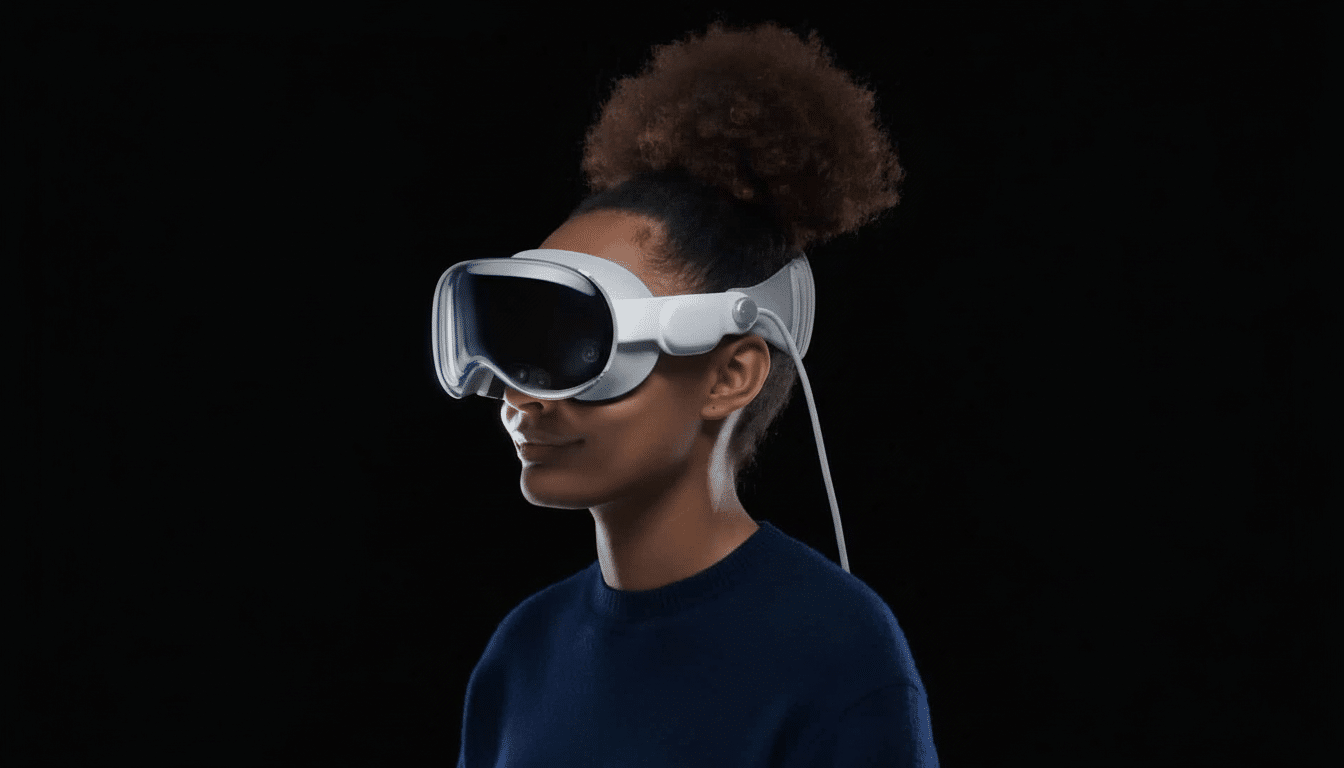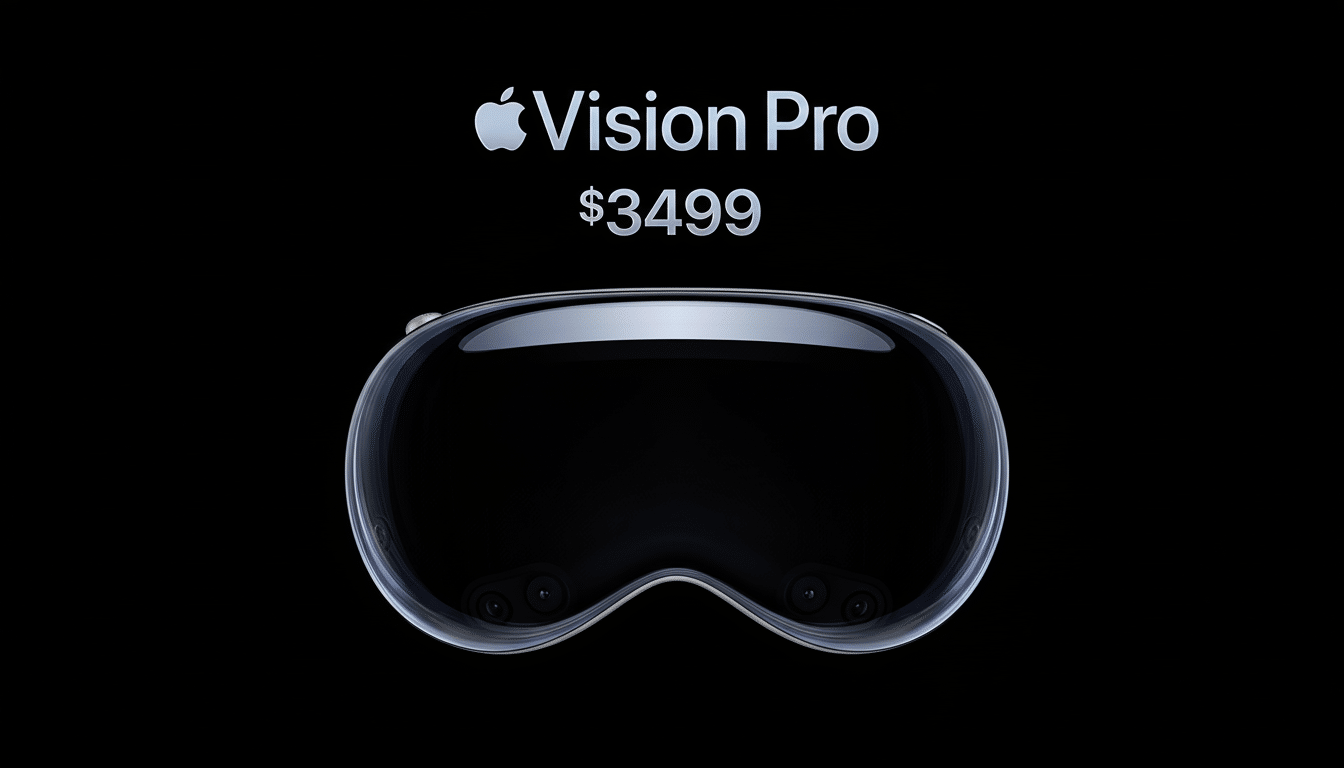Apple is upgrading its high-end mixed-reality device, not reinventing the wheel, and says the Vision Pro will now be home to a new M5 chip as well as a redesigned Dual Knit Band. The new changes include real performance gains, a clearer display, and longer untethered sessions. And yet all that comes at the same starting price: $3,499.
M5 Provides Headroom For Spatial Computing
Built on a third-generation 3-nanometer process, the M5 silicon is intended to make Vision Pro feel faster all-around. Apple points to a 10-core GPU that will help the Apple Vision Pro navigate visionOS more smoothly, enable faster, better multitasking, and deliver richer graphics in productivity and creative apps. This is not purely a question of benchmarks: it is about eliminating frame drops and latency in the kinds of spatial experiences where judder becomes immediately apparent.

Apple also claims the new chip is capable of addressing 10% more pixels on the device’s micro‑OLED panels, which should result in crisper text and finer UI elements. Developers creating interfaces that are high-contrast, dense with data, or CAD-like should appreciate the immediate difference: less aliasing on fine details and improved legibility for long spans.
Sharper Panels and Faster Motion for Visual Clarity
Accompanying the pixel bumps, the Vision Pro’s display pipeline now peaks at 120Hz (as opposed to 100Hz previously). The 120Hz refresh could also reduce perceived blur and increase controller and hand-tracking feedback loops. In real-world terms, that translates into smoother scrolling in the system browser, cleaner rendering of fast-moving overlays in productivity apps, and more comfortable cinematic playback when content is mastered at higher frame rates.
The first-edition model already delivered roughly 23 million pixels across both eyes; more pixels and a faster refresh rate are an obvious play for both comfort and clarity. Analysts at Display Supply Chain Consultants have long emphasized that micro‑OLED manufacturing and yields present a gating item for premium headsets; Apple’s iterative approach here hints at an investment in optimizing what users see and how well it stays stable over time.
Battery and Comfort Practical Upgrades for Users
Battery life gets a practical boost. Apple says general use goes from two-ish hours to about two and a half hours on the external pack, while video playback stretches out from roughly two and a half to three hours. That’s not an all-day fix, but it adds a little play for creators and presenters before they reach for the charger, as well as alleviating some of the anxiety around mid-meeting power dips.
The highest complaint among first adopters—comfort—gets a more direct fix. The new Dual Knit Band incorporates upper and lower bands into one 3D‑knit construction with a reinforcement rib structure. The aim is better weight distribution for the Vision Pro’s front-loaded design, as well as better airflow and stretch. It’s one of Apple’s few accessories, first-party or otherwise, that directly addresses ergonomics—it sells for $99—and notably works with the original Vision Pro, ensuring an upgrade path for people who feel physical discomfort after long sessions of use without purchasing a new headset.

Pricing Position and Market Context for Vision Pro
But Apple leaves the Vision Pro’s starting price at $3,499, indicating that this is still very much a flagship, professional-leaning product and not an attempt to go mass market. That position is a stark contrast to Meta’s approach around Quest 3, which is all about volume at a lower price point, and the company’s Ray‑Ban smart glasses for lightweight, camera-first use. Samsung’s soon-to-be-revealed mixed reality device adds pressure at the high end of the market—a device about which much has been speculated under the codename Project Moohan.
The industry watchers at IDC also predicted that AR/VR shipments would slowly recover as new headsets and more sophisticated software come to market. Apple’s strategy aligns with that path: improve usability, push clarity and lag-to-refresh times forward, let developers fill in the gaps with engaging spatial apps worthy of the investment.
What It Means for Developers and Team Workflows
With more GPU headroom and a higher refresh rate, teams building for visionOS can target richer scenes and denser UI without running headlong into comfort barriers as quickly. Imagine multi-window productivity with live 3D previews, collaborative whiteboarding that doesn’t get blurry at small type sizes, or volumetric design reviews where foveated rendering and scene complexity can scale up responsibly.
Looking at uses for spatial workflows—field support, design verification, training, telepresence—organizations will begin to see small but noticeable improvements across the board with the M5 model: fewer visual artifacts in passthrough-heavy tasks, cleaner annotations, and crisper text when doing work over long periods of time. And the new band may well be the sleeper hit here—comfort-related upgrades will often just directly translate to adoption.
Bottom Line: A Thoughtful, Comfort-Focused Upgrade
The new Vision Pro is not a ground-up redesign, nor does it need to be. The M5 chip, a sharper and faster display pipeline, modest battery improvements, and a smarter fit system tackle the biggest pain points without changing the training-wheels mission of the product. If you’re a developer or professional poised to embrace spatial computing, this is a nicely judged update that makes Apple’s headset more recommendable (and wearable) for longer.

